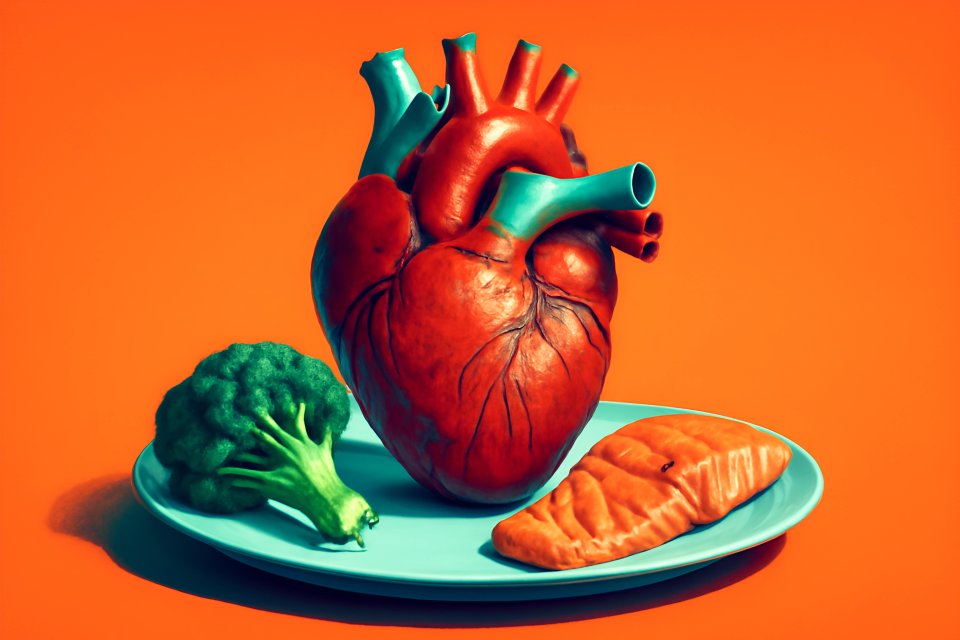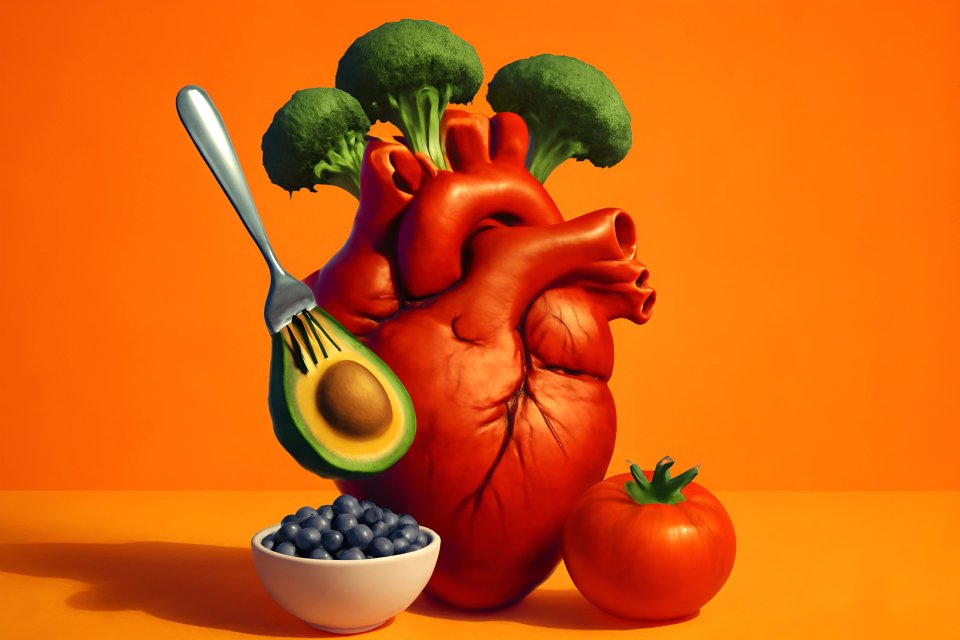
Introduction: Reclaiming Comfort and Mobility, One Bite at a Time
Does the morning start with stiff fingers? Does a walk in the park feel more like a chore than a pleasure? You are not alone. For so many of us over 50, joint pain can feel like an unwelcome companion, a constant reminder that our bodies aren't what they used to be.
But what if one of the most powerful tools for managing that discomfort is already in your kitchen? What if you could fight back against the ache, not with another pill, but with the delicious, nourishing food on your plate? This isn't about restriction; it's about empowerment and taking back control of your well-being.
In this comprehensive guide, we’ll break down exactly how an anti-inflammatory diet for joint pain can help seniors find profound relief. We'll go beyond just listing foods and provide a practical, easy-to-follow plan to help you get started on the path to better joint health and renewed vitality. It's time to turn your meals into medicine and reclaim the active life you deserve.
The "Why": Understanding the Link Between Inflammation and Your Aching Joints
Think of inflammation as your body's natural alarm system. When you get a cut or an injury, this system rushes to the scene to protect and heal you, which is a good thing. The problem begins when that alarm gets 'stuck' in the 'on' position, leading to a state of low-grade, persistent chronic inflammation that can contribute to a host of health issues, especially in our joints.
This is where your diet plays a starring role. Certain foods, particularly those high in sugar, unhealthy fats, and processed ingredients, can fuel this inflammatory fire, making your joints feel even more stiff and painful. Conversely, a diet rich in whole, nutrient-dense foods can help calm it down, providing your body with the tools it needs to soothe the ache from the inside out. According to a 2022 study, diets with a higher pro-inflammatory potential were directly linked to an increased risk of osteoarthritis in seniors, proving that what you eat truly matters.
As we age, our bodies can become more susceptible to this chronic inflammation, making a targeted diet for arthritis relief more crucial than ever. By making conscious choices about the food you eat, you are not just feeding your hunger—you are actively participating in your own healing process. This is a powerful step toward managing your symptoms and improving your overall quality of life.
The Pillars of an Anti-Inflammatory Diet: Your "Eat This, Limit That" Guide
Navigating the world of nutrition can feel overwhelming, but the principles of an anti-inflammatory diet are refreshingly simple. It’s about crowding out the foods that cause irritation by adding more of the foods that heal. Here is your straightforward guide to stocking your kitchen for success.
Foods That Fight Inflammation (Your Go-To Grocery List)
- Omega-3 Rich Fish: Think of salmon, mackerel, and sardines as your joint's best friends. They are packed with omega-3 fatty acids, which are potent anti-inflammatory agents. As noted by health experts, omega-3 intake is associated with decreased inflammation and improved mobility.
- Colorful Fruits & Berries: Blueberries, cherries, strawberries, and oranges are loaded with antioxidants called polyphenols. These compounds protect your body from the cellular stress that can lead to inflammation.
- Leafy Greens & Cruciferous Veggies: Spinach, kale, and broccoli are nutritional powerhouses. They are full of vitamins and anti-inflammatory compounds that support your entire body.
- Nuts & Seeds: Walnuts, almonds, flaxseeds, and chia seeds provide a fantastic mix of healthy fats and fiber. They are perfect for snacking or adding a crunch to your meals.
- Healthy Oils: Extra virgin olive oil is a cornerstone of the Mediterranean diet for a reason. Its compounds can have an anti-inflammatory effect similar to ibuprofen.
- Whole Grains: Swap refined grains for oats, quinoa, and brown rice. Their high fiber content helps fight inflammation.
- Powerful Spices: Turmeric, especially when paired with black pepper, is a superstar anti-inflammatory. Don't forget about the soothing properties of ginger and garlic, too.
Foods That Can Trigger Inflammation (What to Limit)
- Sugar & High-Fructose Corn Syrup: Found in sodas, candies, and many processed foods, sugar is a major trigger for inflammation. The Arthritis Foundation strongly advises limiting sugar intake to help manage symptoms.
- Refined Carbohydrates: White bread, pasta, and pastries are quickly broken down into sugar in your body, which can spike inflammation.
- Processed & Red Meats: Hot dogs, sausage, and excessive amounts of red meat have been linked to higher levels of inflammatory markers in the body.
- Unhealthy Fats: Trans fats, often found in fried foods, margarine, and processed snacks, are notorious for causing inflammation.
- Excess Omega-6: While some omega-6 fatty acids are necessary, an imbalance caused by consuming too many vegetable oils like corn and soybean oil can be pro-inflammatory.
Your 7-Day Anti-Inflammatory Meal Plan Template
Getting started is often the hardest part. Use this as inspiration! The goal is to make healthy eating simple and delicious, not to follow a rigid set of rules. This template is designed to show you just how easy and satisfying an anti-inflammatory lifestyle can be.
| Day | Breakfast | Lunch | Dinner | Snack |
|---|---|---|---|---|
| Monday | Oatmeal with blueberries, walnuts, and a sprinkle of cinnamon. | Large spinach salad with grilled chicken or chickpeas, avocado, and an olive oil vinaigrette. | Baked salmon with roasted broccoli and quinoa. | An apple with almond butter. |
| Tuesday | Scrambled eggs with spinach and a side of whole-grain toast. | Lentil soup with a side of mixed greens. | Turkey meatballs over zucchini noodles with a tomato-basil sauce. | A handful of almonds. |
| Wednesday | Greek yogurt with strawberries and chia seeds. | Leftover turkey meatballs and zucchini noodles. | Sheet-pan sausage (chicken or turkey) with bell peppers and onions. | A pear and a cup of green tea. |
| Thursday | Smoothie with kale, pineapple, banana, and almond milk. | Tuna salad (made with Greek yogurt instead of mayo) in lettuce cups. | Black bean burgers on whole-wheat buns with a side salad. | A small bowl of cherries. |
| Friday | Whole-grain toast with avocado and a sprinkle of red pepper flakes. | Quinoa bowl with roasted sweet potatoes, black beans, corn, and a lime-cilantro dressing. | Grilled shrimp skewers with a side of brown rice and asparagus. | A few squares of dark chocolate (70% or more). |
| Saturday | Oatmeal with sliced peaches and a drizzle of honey. | Leftover shrimp and rice. | Hearty chicken and vegetable soup. | Baby carrots with hummus. |
| Sunday | Veggie omelet with mushrooms, onions, and bell peppers. | Large salad with leftover chicken, mixed nuts, and a balsamic vinaigrette. | Roasted chicken with a side of mashed cauliflower and green beans. | A handful of walnuts. |
For more delicious meal ideas that fit this plan, check out these nutrient-dense dinner ideas for heart health, as the same principles that protect your heart also soothe your joints.
Practical Tips for Making the Switch Easy and Sustainable
A new way of eating should feel liberating, not limiting. The key to long-term success is to make changes that you can actually stick with. Forget about perfection; focus on progress.
Start small. You don't have to overhaul your entire diet overnight. Try adding one new anti-inflammatory food to your day or making one simple swap, like choosing brown rice instead of white. As one health expert advises, making small, consistent dietary changes is a practical and effective approach for seniors.
Focus on smart swaps. Instead of sugary cereal, try oatmeal with berries. Instead of soda, enjoy sparkling water with a squeeze of lemon. These small adjustments add up over time. And don't forget that hydration is key—water helps lubricate your joints and flush out toxins, so be sure to drink plenty of it throughout the day.
Finally, listen to your body. Everyone is different, and a food that works wonders for one person might not be the best for you. Pay attention to how you feel after you eat. This journey is about discovering what makes your body feel its absolute best. For a deeper dive, explore these essential nutritional strategies to reduce inflammation for active seniors.
Beyond the Diet: Lifestyle Habits to Amplify Your Results
Your diet is a cornerstone of joint health, but it works best when combined with other healthy habits. Think of it as a team effort, where every player has a crucial role. A holistic approach is your best strategy for lasting relief.
Gentle movement is non-negotiable. Low-impact exercises like walking, swimming, or tai chi help lubricate the joints, strengthen supporting muscles, and reduce stiffness without causing further strain. Combining a healthy diet with physical activity is a powerful one-two punch against joint pain. To learn more, explore these effective recovery techniques for joint health and mobility after 50.
Never underestimate the power of sleep. Quality sleep is when your body does its most important repair work, helping to lower inflammation and heal damaged tissues. In fact, a 2023 pilot study found that an anti-inflammatory diet was directly correlated with improved sleep satisfaction in patients with chronic pain. Aim for 7-9 hours of restorative sleep each night.
Finally, manage your stress. Chronic stress floods your body with the hormone cortisol, which can drive inflammation. Simple practices like deep breathing, meditation, or spending time in nature can make a significant difference in both your mental and physical well-being.
Conclusion: Your Journey to a More Comfortable, Active Life
Adopting an anti-inflammatory eating style is one of the most powerful, proactive steps you can take to manage joint pain and reclaim your vitality. It's not a temporary diet; it's a lifestyle choice that nourishes your body from the inside out, giving you the strength and comfort to do the things you love. Every healthy choice is an investment in your future well-being.
This journey is about adding more of the good stuff to your plate to soothe your joints, boost your energy, and continue living the vibrant life you deserve. The power to feel better is in your hands—and on your fork. By focusing on these healing foods, you can also supercharge your immunity for healthy aging.
What's your favorite anti-inflammatory food or recipe? Share it with the FitOverFifty community in the comments below.












